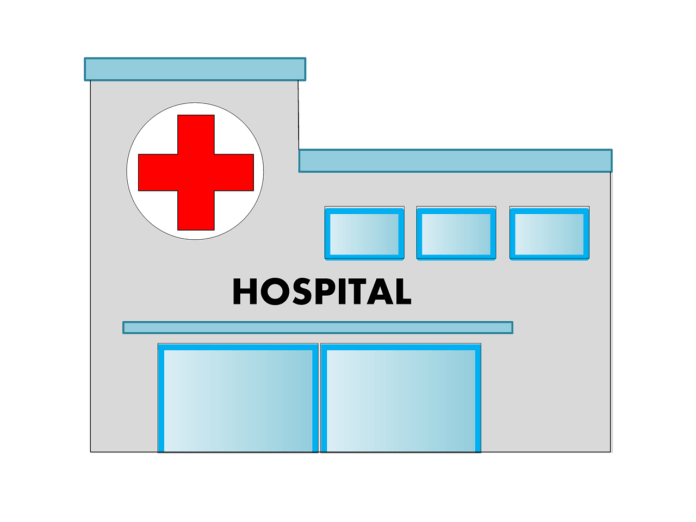Last Updated on October 18, 2024 by The Health Master
Hospitals
In a groundbreaking move, the Reserve Bank of India (RBI) announced a significant update to the UPI payment system during its December bi-monthly monetary policy unveiling.
The RBI Governor, Shaktikanta Das, declared a substantial increase in the UPI payment limit specifically tailored for transactions involving hospitals and educational institutions.
Understanding the UPI Payment Limit Expansion
The RBI’s decision involves a meticulous review of the UPI transaction limits, addressing the evolving needs of consumers.
Let’s delve into the key aspects of this transformative announcement.
1. Enhanced Limits for Hospitals and Educational Institutions
The primary highlight of the RBI’s decision is the substantial increase in the UPI transaction limit for payments to hospitals and educational institutions.
Previously set at Rs 1 lakh, this limit has now been elevated to an impressive Rs 5 lakh per transaction.
2. E-Mandate Cap Adjustment
Governor Das also addressed the burgeoning popularity of e-mandates for recurring payments.
The existing cap for additional factor authentication (AFA) in recurring transactions, currently set at Rs 15,000, is proposed to be enhanced to Rs 1 lakh.
This adjustment is specifically aimed at transactions related to mutual fund subscriptions, insurance premium subscriptions, and credit card repayments.
Implications for Consumers
The augmented UPI limits carry substantial implications for consumers, especially in the domains of healthcare and education.
1. Empowering Healthcare Transactions
Dr. J.S. Bhawalkar, Dean of Dr. D.Y. Patil Medical College, Hospital, and Research Centre, emphasizes the operational benefits of this move for both hospitals and patients.
The increased UPI payment limit to Rs 5 lakh eliminates previous restrictions and tedious payment methods, enabling swift and hassle-free transactions during emergencies.
2. Catalyzing E-Mandate Adoption
CA Jyoti Prakash Mahapatra, CFO of Ruby Hall Clinic, applauds the RBI’s decision as a positive shift in financial dynamics.
This strategic move is expected to bring transformative impacts, especially in the healthcare sector, by addressing existing challenges and fostering seamless and efficient transactions.
Conclusion
The RBI’s decision to raise UPI payment limits for healthcare and education signifies a pivotal moment in the evolution of financial transactions.
This move not only addresses the practical needs of consumers but also paves the way for a more transparent, efficient, and seamless financial ecosystem.
Disclaimer: This article contains information derived from the source mentioned below. Our team utilized an AI language model to rewrite and present the news or article in a unique format.
FAQs
- What is UPI, and how does it impact financial transactions?
- UPI, or Unified Payments Interface, is a real-time payment system in India. The recent RBI decision to raise UPI payment limits has a significant impact on various financial transactions.
- How does the increased UPI payment limit benefit healthcare transactions?
- The enhanced UPI payment limit to Rs 5 lakh empowers both hospitals and patients, allowing for swift and hassle-free transactions, particularly during emergencies.
- What are e-mandates, and how will the adjustment in the cap affect recurring transactions?
- E-mandates involve an additional factor of authentication for recurring transactions. The RBI’s proposal to raise the cap to Rs 1 lakh aims to catalyze the adoption of e-mandates in transactions like mutual fund subscriptions, insurance premium subscriptions, and credit card repayments.
- How will the RBI’s decision impact the overall dynamics of financial transactions?
- The decision is seen as a positive shift, bringing transformative impacts, especially in sectors like healthcare. The elevated UPI payment limit addresses existing challenges, fostering a more seamless and efficient financial ecosystem.
- How can individuals access and benefit from these changes?
- To access and benefit from these changes, individuals can stay informed about the updated UPI limits and explore the enhanced possibilities for transactions in healthcare and education.
Painkiller: पेनकिलर क्यों है खतरनाक ?: Must Read
Adverse Effects of Painkillers: A Comprehensive Guide
AI Laser Cameras to Replace Stethoscopes in Healthcare
Drug used for arthritis can help control Baldness: Study
Biometric cards for Pharmacists for efficient drug dispensing
WHO Guideline: To tackle acute malnutrition in children under 5
For informative videos by The Health Master, click on the below YouTube icon:
For informative videos on Medical Store / Pharmacy, click on the below YouTube icon:
For informative videos on the news regarding Pharma / Medical Devices / Cosmetics / Homoeopathy etc., click on the below YouTube icon:
For informative videos on consumer awareness, click on the below YouTube icon:











